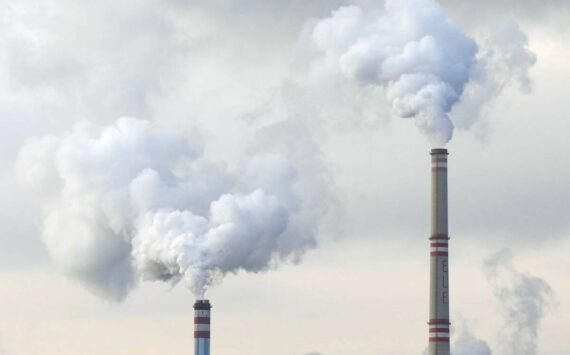In a voluntary, proactive decision to protect Puget Sound air quality, the Evergreen Group announced that all diesel-powered equipment at the Port of Tacoma’s Pierce County Terminal are required to use ultra-low sulfur diesel (ULSD) fuel.
Evergreen’s announcement came just months after the Port of Tacoma Commission directed that all diesel equipment at Port-operated facilities also utilize ULSD fuel. While the decision increases the operational costs for Evergreen, use of the more expensive fuel has tangible benefits for the environment and the community.
“Ocean carriers and their port/terminal partners must be proactive in using the latest technology as soon as it is available to minimize the impact of container shipping operations both on marine life and on port communities,” said Evergreen Group Chairman Dr. Y. F. Chang. This “greening of Evergreen” has been mandated by the career-long philosophy of Chang, who believes all ship owners have a duty to minimize the impact of their operations on the global environment at any cost.
“We value the support that this community has shown for its port, and we are continuously on the lookout for ways to return that support to the community,” said Port of Tacoma Executive Director Timothy J. Farrell. “One way we do that is through job creation. Another is through environmental stewardship. It’s great that Evergreen is making the same commitments to Pierce County residents that the Port makes. After all, Pierce County needs to be not only a great place to work, but also a great place to live.”
R. Ted Bottiger, President of the Port of Tacoma Commission, explained that the use of ULSD reduces sulfur dioxide (SO2) emissions by 97 percent. “Unchecked, these emissions have potential to contribute to respiratory illness, particularly in children and the elderly,” he said, noting that the Puget Sound region currently meets clean air standards. “We appreciate Evergreen’s leadership on this issue.”
Executive Director of the Puget Sound Clean Air Agency, Dennis McLerran, added, “The Clean Air Agency applauds Evergreen’s decision to switch to cleaner-burning ultra-low sulfur diesel fuel for its terminal equipment. As one of the largest shipping lines in the world, this voluntary, proactive step by Evergreen demonstrates great leadership in the effort to keep air in and around the Port of Tacoma clean and healthy.”
Ultra-low sulfur diesel is not yet readily available at all North American ports. However, U.S. Oil adjacent to the Port of Tacoma is a major ULSD refiner and supplier.
For both Pierce County Terminal and at Port-operated facilities, the major users of diesel fuel are straddle carriers three-story-tall vehicles, powered by twin-diesel engines, designed to transport containerized cargo from ship to rail.
Serving ocean carriers Evergreen Marine, Hatsu Marine and Lloyd Triestino, the 171-acre Pierce County Terminal utilizes 34 straddle carriers. The Port of Tacoma, meanwhile, operates 38 straddle carriers between Husky Terminal, Olympic Container Terminal and the Port-operated North Intermodal Yard.
Classified as non-road vehicles, straddle carriers have a federally set SO2 emission standard of 5,000 ppm (parts per million). This limit will become 500 ppm in June 2007. And a SO2 limit of 15 ppm becomes effective in June 2010 for non-road fueled vehicles. According to Cindy Lin, the Port’s Manager of Environmental Compliance, use of ultra-low sulfur diesel means that Evergreen and Port-operated diesel equipment is meeting the 2010 standard today.
Evergreen’s newest S-type vessels incorporate many new environmental features well beyond the requirements of new and soon-to-be-introduced international environmental upgrade requirements. “Although our market is price-driven and highly competitive with our customers all seeking to achieve the lowest shipping costs, they are also very aware of the environmental issues. We can assure them that Evergreen will provide first-class services while maintaining the highest environmental standards,” said Chang.
S-class ships incorporate a double-skinned hull, and all fuel tanks have been situated within the transverse bulkhead spaces, thus minimizing the risk of oil pollution or fire as a result of grounding or collision. A high-capacity oil/water separator reduces the oil content of the wastewater below 15 ppm. The enlarged capacities of separated waste oil storage and a bilge water holding tank enable the vessels to avoid any discharge when sailing in environmentally sensitive areas. Furthermore, extra holding capacity maximizes the amount of bilge water that can be held for proper disposal in specialized on-shore facilities. Similar shore-side waste disposal arrangements have been made for sewage and gray water when the vessels are in or near a port.
The main engines and generators of the ships are equipped with nitrogen oxide-reduction technology. The ships also have the ability to switch to low-sulfur fuels when sailing in Special SOx (sulfur oxide) Emission Control Areas (SECAs), such as Baltic Sea.




